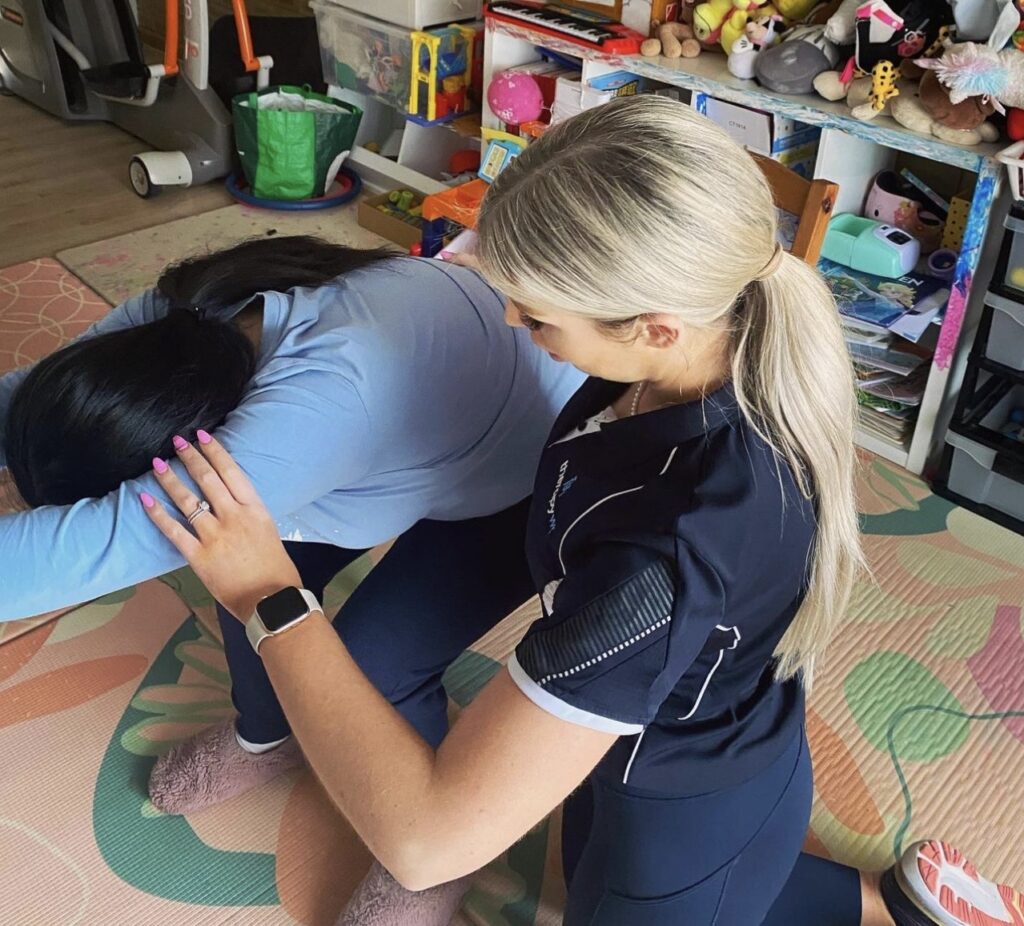Phone: (08) 6156 9363 – Mobile Physiotherapy Service Across the Perth Metro Area

15th December 2023
Hello and welcome back to our blog, Therapy WA Talks! Here we will give an insight into what it is we at Therapy WA do, shining a spotlight on all thing’s physiotherapy, the weekly happenings of our therapists and giving our amazing clients a voice.
Therapy WA is a WA owned and ran mobile physiotherapy service servicing the Perth Metro area. Our focus is on making physiotherapy accessible to all, with a patient-centred, functional, and fun approach.
This week, we have decided to talk about a condition that we see very often in our caseload and hope to inform our readers on the details surrounding stroke – what recovery can look like and what physiotherapy can do to help it. I think we all know or know of someone who has had a stroke, and we will start by saying that stroke often looks different on everyone, with hugely variable symptoms and recovery following. For some people unfortunately stroke can be fatal, where for others an excellent recovery is possible. We realise although we hear about stroke all the time, many people may not know the physiological causes behind it, symptoms and issues following and the rehabilitation options available post-stroke. We hope you enjoy reading.
Stroke is a serious medical condition that occurs when there is a disruption in the blood supply to the brain, leading to damage of brain cells. It is a medical emergency that requires immediate attention. In this blog post, we will explore the causes, symptoms, risk factors, and preventive measures associated with stroke.
What is a Stroke?
A stroke, also known as a cerebrovascular accident (CVA), can be classified into two main types: ischemic and haemorrhagic.
Causes of Stroke:
Symptoms of Stroke:
Recognising the symptoms of a stroke is crucial for seeking immediate medical attention. Remember the acronym FAST:
If you observe any of these signs, it’s time to call emergency services.
Risk Factors for Stroke:
Several factors increase the risk of stroke, including:
Prevention of Stroke:
Adopting a healthy lifestyle can significantly reduce the risk of stroke:
Stroke is a serious medical condition, but awareness, timely intervention, and lifestyle modifications can significantly reduce the risk. Recognising the symptoms, understanding the causes, and addressing risk factors are essential steps towards stroke prevention. If you suspect a stroke, remember to act FAST and seek immediate medical help.
Ok, so now that we know a little more about the causes of stroke, this is where we as physiotherapists may come in.
Physiotherapy for Stroke:
A stroke can have a profound impact on an individual’s life, affecting their mobility, coordination, and overall quality of life. Physiotherapy plays a crucial role in the rehabilitation process, helping stroke survivors regain strength, improve mobility, and enhance their overall well-being. Now that we have talked about the pathophysiology of stroke, we will now delve into the significance of physiotherapy in stroke recovery and explore the various techniques and exercises employed by physiotherapists and what is available to our clients at Therapy WA.
Understanding Stroke Rehabilitation:
Rehabilitation after a stroke is a comprehensive process aimed at restoring function and promoting independence. Physiotherapy, a key component of stroke rehabilitation, focuses on addressing physical impairments and optimising the individual’s ability to perform everyday activities.
Goals of Physiotherapy in Stroke Rehabilitation:
Techniques and Exercises:
As mentioned above, here at Therapy WA stroke patients form a large part of our caseload. This is sometimes immediately after they have been discharged from hospital or rehab centre, or sometimes several years following their stroke. Following initial referral, we will come to the client’s home, complete a thorough initial assessment and get working right away on functional goals and treatments to allow the client to achieve these goals. This may be initially centred around pain management, and moving towards mobility, independence in the home, getting back to hobbies and recreational activities and overall improvement of quality of life and getting back to the things you or your family member enjoyed prior to stroke.
We will also devise a personalised home exercise programs to complement our sessions. These programs empower stroke survivors to continue their rehabilitation independently, promoting long-term recovery.
Physiotherapy is a cornerstone of stroke rehabilitation offering hope and tangible progress to survivors, and we at Therapy WA are here to help with an empathetic, fun, and holistic approach. Through physiotherapy treatment, targeted exercises, personalised treatment plans, and a focus on functional improvement, physiotherapists contribute significantly to the journey of recovery after a stroke.
We hope you have enjoyed this glimpse into stroke and physiotherapy, and what Therapy WA can do to help. As always, every person will present differently, and every client will be assessed and treated individually according to their needs, with a personalised and goal-centred approach. Stroke recovery looks very different for everyone, and most importantly we will guide and support you through this most challenging time with encouragement, motivation, and a listening ear. We know it is tough, but we are here to help.
Please reach out if you have any questions lisa@therapywa.com.au
Take care and talk soon 🙂
Monday — Friday
8:30am 4:30pm
Saturday — Sunday
Closed

TherapyWA acknowledges and regrets the imposition to the lives and culture of Aboriginal people which occurred as a result of European colonisation within Australia. We would like to acknowledge the traditional custodians of Country throughout Australia and their connections to the land, sea and the community. We will continue to pay respects to their elders past and present and all aboriginal people, especially those we may meet as part of our work.